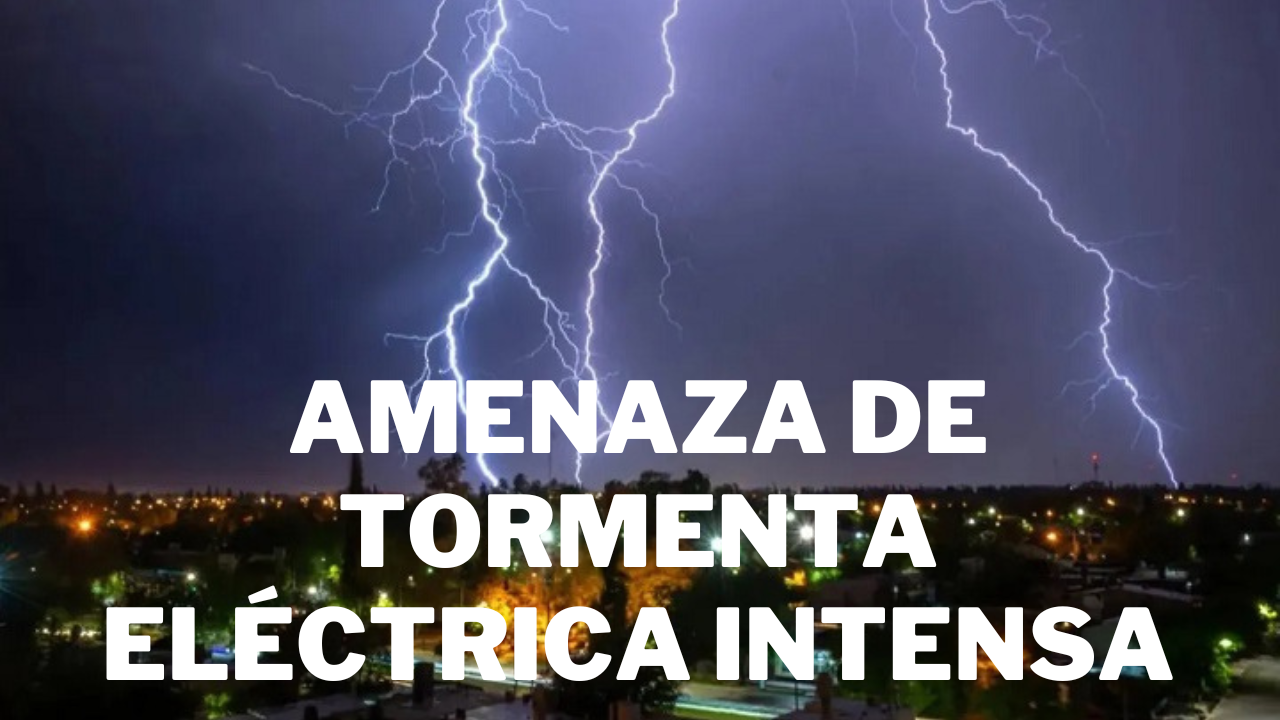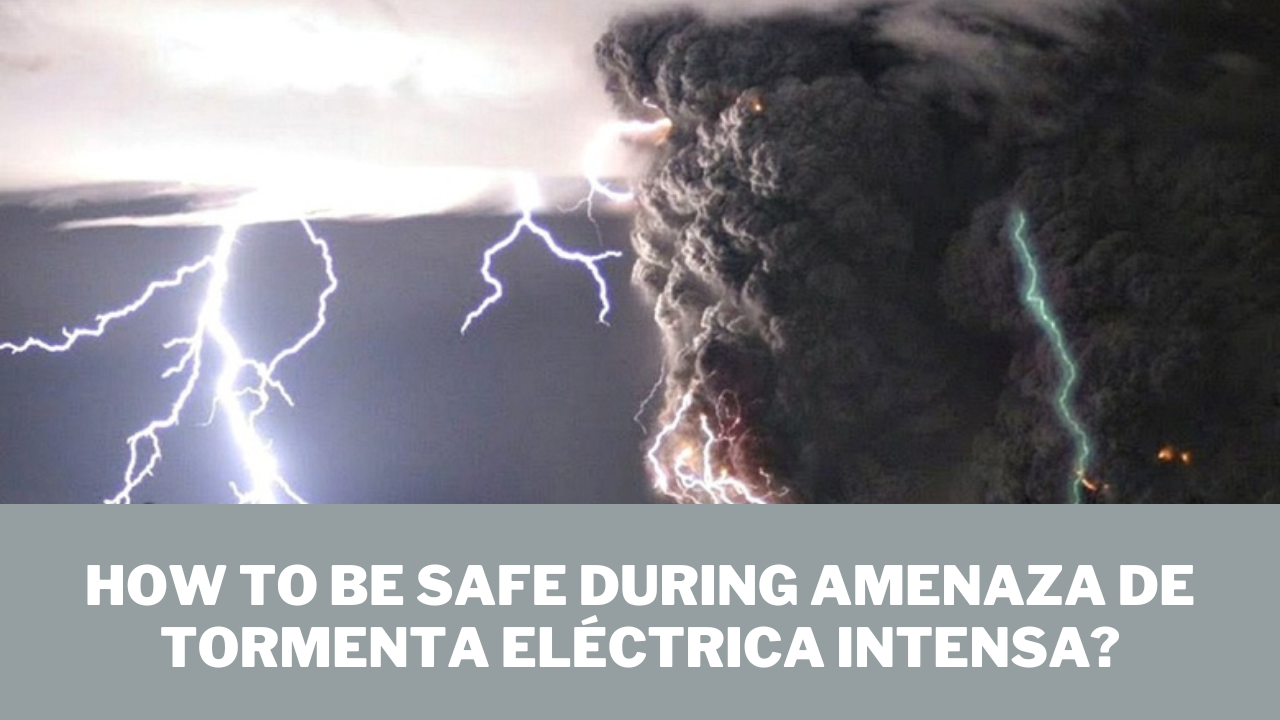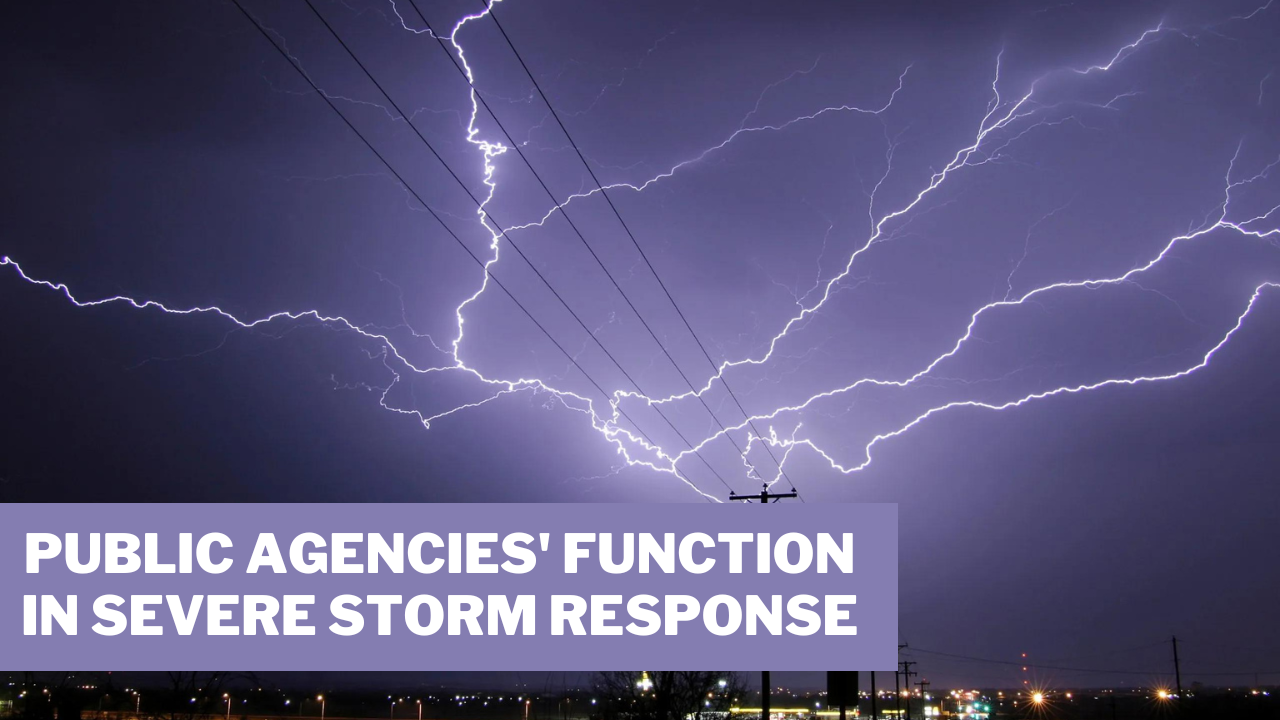What is Amenaza De Tormenta Eléctrica Intensa (Threat of Intense Electrical Storm)
- 1 What Do Amenaza De Tormenta Eléctrica Intensa Actually Mean?
- 1.1 The Perils of Severe Amenaza De Tormenta Eléctrica Intensa
- 1.1.1 Thunderstorm
- 1.1.2 Salute
- 1.1.3 Brisk winds
- 1.1.4 Rapid Flooding
- 2 How to Be Safe During Amenaza De Tormenta Eléctrica Intensa?
- 2.1 Prior to the Storm
- 2.2 Following the Storm
- 2.3 Putting Preventive Measures in Place
- 2.3.1 Grounding and Lightning Rods
- 2.3.2 Protectors Against Surges
- 2.3.3 Standby Generators
- 2.3.4 Systems for Weather Alerts
- 2.3.5 Technology for Storm Prediction
- 2.4 Public Agencies’ Function in Severe Storm Response
- 2.4.1 Weather Service of the Nation (NWS)
- 2.4.2 Departments of Emergency Management
- 2.4.3 Suppliers of utilities
- 2.4.4 Departments of Public Works
- 2.4.5 Medical Networks
- 2.5 Some Other Narratives of Storm Survival
- 2.6 A Hurricane Andrew (1992) survivor
- 3 The Bottom Line
In Shorts:
- An Amenaza De Tormenta Eléctrica Intensa alert is issued if thunderstorms with wind speeds of more than 58 mph and hail 1 inch or bigger are possible.
- The forecast is based on information from weather stations, radar, and spotters that point to the possibility of severe thunderstorms.
- Within the notified region, strong winds, hail, and lightning are approaching. Be prepared.
- People in the storm’s path should stay indoors and not get behind the wheel right away.
- For most counties and areas, a severe storm warning is valid for little more than an hour or until the storm dies down. Keep an eye on the weather predictions in case the storms reappear.
Amenaza De Tormenta Eléctrica Intensa is a powerful electrical storm upon us. The clouds grow gloomy and thick, lightning cracks across the sky, thunder rumbles menacingly, and the land is lashed with torrential rain. Tormentas eléctricas intensas, sometimes called Amenaza De Tormenta Eléctrica Intensa in Spanish, are vital meteorological phenomena that may be fascinating and dangerous if appropriate safety measures aren’t followed.
What Do Amenaza De Tormenta Eléctrica Intensa Actually Mean?
Severe thunderstorms, often known as supercells or violent electrical storms, are defined by heavy precipitation, strong winds, frequent and intense lightning, and the possibility of hail. Meteorologists claim that they are different from typical thunderstorms in the following ways:
- Hail with a minimum diameter of one inch (2.5 cm) is present
- gusts of wind exceeding 58 mph (93 km/h)
- Lightning that strikes often and powerfully
- Heavy rainstorms
Tall, thick cumulonimbus clouds within the storms provide strong upward and downward breaths of wind and moisture that drive these vigorous dynamics. Because of the turbulent environment inside the clouds, massive static electrical charges are produced when ice crystals, hail, and water droplets come forcefully into contact. This continues until the distribution is balanced and lightning strikes.
The Perils of Severe Amenaza De Tormenta Eléctrica Intensa
Intense electrical storms are fascinating to watch from a safe distance, but they also provide significant short- and long-term risks:
Thunderstorm
In the United States, lightning is the primary cause of storm-related deaths each year. Up to 1 billion volts of electricity and temperatures as high as 50,000°F—more than four times hotter than the surface of the sun—can be found in a single hit! When these powerful forces come into touch with the earth, they have the potential to kill humans and animals, start fires, and destroy property.
Salute
Massive hailstones have a tremendous impact velocity that can damage vehicles, break windscreens, dent metal, and hurt humans and animals that are not wearing protection. Every year, hail damage causes damages of around $1 billion to homes, companies, and crops in the United States.
Brisk winds
Severe thunderstorms with solid downdrafts can produce severe straight-line winds that can reach speeds of over 58 mph. Winds of this speed have the ability to upend buildings’ roofs, collapse trees and power lines, toss loose debris, and transform ordinary objects into potentially harmful flying missiles.
Rapid Flooding
Devastating flash floods can be caused by intense rainfall brought on by severe weather phenomena and the hard pavement in metropolitan areas. In a matter of minutes, water levels may increase to dangerous levels, drowning houses and roadways, shocking drivers, and trapping inhabitants. Actually flash floods are the leading cause of weather-related fatalities in the United States each year.
How to Be Safe During Amenaza De Tormenta Eléctrica Intensa?
The secret to surviving severe storms unscathed is early planning and swift emergency response.
Here are some helpful advice:
Prior to the Storm
- Check for storm alerts regularly and monitor weather predictions. If there are any severe thunderstorm warnings in your area, take note of them.
- Protect decorations, gardening equipment, and outdoor furniture that can blow away or get damaged.
- Prune any tree branches that could break off and land on power wires in the event of strong winds.
- Let appropriate water discharge by keeping storm drains and rain gutters clear.
- Assemble and inspect emergency packs, including cash, flashlights, batteries, medical supplies, and other items.
In the midst of the storm
- Take cover indoors immediately. Avoid wide areas, lone trees, hilltops, and bodies of water, as these are lightning-strike magnets.
- Unplug appliances and electronic equipment well in advance to avoid voltage surges that can destroy equipment by passing through cables and damaging gadgets.
- To lower the chance of electrocution, keep your hands away from running water from taps, showers, or bathtubs.
- Avoid windows since solid gusts of wind have the potential to break the glass inward. Shut all external doors firmly.
- Avoid landline phones and electrically conducting headphones. Cell phones are secure as long as you are within a building.
- For your safety, avoid operating a vehicle or going outside until the severe weather passes.
Following the Storm
- Take caution while walking outside since storm-related debris, broken power lines, damaged buildings, flooded regions, and uprooted trees can linger for a long time.
- To evaluate property damage, make claims, and receive help repairing your house, get in touch with your insurance company.
- If you or anyone else has been hurt, get medical attention. Call emergency services to report serious problems with gas, electricity, or floods.
- Keep an eye on the state authority and @Readygov social media channels for resources and information on recovery.
Putting Preventive Measures in Place
Preventive and defensive methods to lessen the devastating effects of electrical solid storms have grown more crucial as they become more frequent:
Grounding and Lightning Rods
Lightning protection systems, which include lightning rods and appropriate building grounding, provide safe electrical channels that direct harmful electricity into the earth. This equipment is essential infrastructure, particularly in places where lightning is common.
Protectors Against Surges
Surge protection mechanisms in power strips temporarily block excess electrical current from accessing connected devices. Use them on workplace and household appliances that are susceptible to voltage spikes caused by outages and lightning.
Standby Generators
During storm-related blackouts, gas-powered generators provide a backup electrical supply to maintain the functionality of vital appliances, lighting, and medical equipment. These can last for days without interruption until regular utility service is resumed.
Systems for Weather Alerts
Early warning weather alert systems use siren towers, text broadcasts, TV bulletins, and phone alerts to notify communities of impending severe storms. Lead times might vary from a few minutes for systems developing quickly to a few hours for storms moving slowly.
Technology for Storm Prediction
Satellites collecting atmospheric data in real-time, weather radar systems, and lightning detection networks are all components of sophisticated weather monitoring. These datasets are then analysed using sophisticated computer modelling and artificial intelligence (AI) to precisely forecast a storm’s route and development for highly targeted warnings.
Public Agencies’ Function in Severe Storm Response
Effective intense storm response depends on meteorologists, emergency personnel, and repair teams coordinating their actions seamlessly:
Weather Service of the Nation (NWS)
NWS meteorologists monitor the weather closely and disseminate storm updates, alerts, and safety information via wireless emergency alerts, social media, and broadcasts. Local NWS offices may also send personnel to assess the storm’s effects.
Departments of Emergency Management
Local emergency management works directly with the NWS to receive weather notifications. When severe storms pose a threat, emergency protocols are triggered, public advisories about safety measures are released, shelters and command centres are put up, search and rescue teams are prepared, and post-disaster assistance is coordinated.
Suppliers of utilities
After severe storms, power companies quickly send out staff to fix substantial infrastructure damage and restore service. They give communities ETAs and outage maps so they may make appropriate plans. Utilities such as gas and water also fix leaks and restart operations.
Departments of Public Works
City public works remove floods, fallen trees, and powerlines from roadways to enable first responders to reach damaged areas quickly. They then arrange for the long-term clearing of storm debris and the reconstruction of road infrastructure.
Medical Networks
When severe storms occur, nearby clinics and hospitals initiate emergency procedures, which include rescheduling non-essential appointments, setting up incident command centres, and increasing capacity to manage a possible inflow of wounded locals.
Some Other Narratives of Storm Survival
Communities throughout the world have suffered, grieved, and recovered from exceptionally memorable and destructive electrical storms. Numerous survivors relate terrifying tales of their near-death experiences:
A Hurricane Andrew (1992) survivor
John A., who lives in Florida, was just 17 years old when Hurricane Andrew, a Category 5 storm, hit Homestead. His stomach churning “like it would just fly away” in the face of howling winds that made him sound “like a thousand people screaming.” John was astounded to discover well-known structures and landmarks utterly flattened, as if “someone put them in a blender” at daylight. It took many months for his hometown’s food supply, power, and a general feeling of normalcy to return.
Employees at the Hospital Weather Hurricane Sandy (2012)
Dr. Laura-Leigh Wayne, an emergency room physician at New York Downtown Hospital, posted videos on Instagram as Hurricane Sandy lashed out over the Eastern Seaboard, showing how she and other medical staff members, along with patients, took shelter after flooding flooded the first floor and backup generators failed. They treated trauma and hypothermia patients in low light for days without electricity until a planned evacuation could be carried out safely.
Survivor of the Midwest Tornado Outbreak (2022)
Patti Harper of Monticello and her grandson escaped to their storm shelter in December 2022, only minutes before an EF4 tornado tore through Kentucky, destroying their whole neighbourhood. Harper continues to work with FEMA and neighbourhood charities to provide temporary accommodation in the middle of the extensive wreckage, having experienced the horror of nearly being buried alive. She and other storm victims believe that by sending out vital early warnings, the NOAA emergency alert system saved numerous lives.
The Bottom Line
Electrical solid storms and other weather disasters cause severe mental suffering in addition to infrastructure and property destruction. Storm-related events can cause PTSD, anxiety, sadness, insomnia, irritability, difficulty in relationships, and a strong sense of survivor’s guilt in people who are impacted. Youngsters typically exhibit more significant rates of persistent storms.
FAQs
What is a warning for a severe thunderstorm?
The National Weather Service issues a severe thunderstorm warning when a thunderstorm with gusts above 58 mph and hail that is one inch in diameter or greater is approaching or has already occurred.
How are alerts for severe thunderstorms issued?
Weather radar, storm spotters, and weather stations provide information that triggers severe thunderstorm warnings, which include the possibility of huge hail and devastating winds. Alerts suggest that anyone along the storm’s path is at grave risk.
If a severe thunderstorm warning is issued for my location, what should I do?
Get indoors and away from the windows. Avert utilising corded phones and electrical devices. If there is a strong wind, lightning, or hail in the area, do not drive or remain outside. Prior to starting outside activities again, wait for the storm to pass.
What is the duration of a severe thunderstorm warning?
Parts of one or more counties are covered by severe thunderstorm warnings, which are typically issued for an hour or less or until the storm passes through the area or drops below severe levels. Keep an eye out for updated predictions and warnings in case the storms get worse again.



















